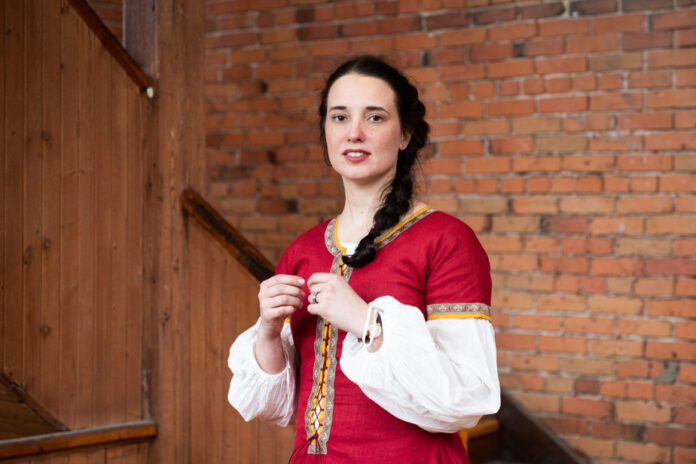Audrée Wilhelmy continues to weave the web of her unique universe with Peau-de-sang. And here she undoubtedly offers one of her most accomplished works.
Sleazy, bloody, carnal, powerful, amoral, fantastic, sulphurous, drawing its strength from the absolute emancipation of the female voice. This sixth novel is all that, and much more. Those who have fallen under the spell of Audrée Wilhelmy’s pen will once again pulse with her and her narrator, the village plucker of whom we will only know the nickname: Peau-de-sang.
Her story, the one whose figure evokes as much the conveyor of knowledge as the witch, does it from a point of view which, narratively, brings a lot of richness. She is, from the first lines, condemned, killed. His voice comes to us from beyond the grave; formally, this gives a story carried by a particular breath, without points, a flow in which other women’s voices will gradually intermingle, in an ardent chorus. And the reader is placed in a position of investigation: who among these people killed the plucker?
The novel begins with this vision of horror, of dark poetry: the feathery “clinging by the mouth and the wrists”, blood falling “in black drops on the piled up viscera”, offered to the view of the men massed in front of her. stall, who observe him through the window, where his body hangs among the goose carcasses.
Rewinding the flow of time, our beautiful disembowelled waterfowl depicts the action a year earlier, in the imaginary and dusty village of Kangoq, in the remote times of rural Quebec. Plumery is a “light trap” that attracts both men and women, where all social status falls. The first come to satisfy their desires; the plucker welcomes them all between her hips, lets the fantasies express their free rein. The latter find a place to appropriate their violated desires. Through the needle that embroiders beads and ornaments, the young girls who come to her learn to sew their trousseau and also weave the threads of their destiny.
Impossible to read Peau-de-sang without thinking of the feminicides which continue to swallow up women here and elsewhere. But this novel is not a pamphlet. Pleasure, transgression, the pagan celebration of impulses and a fierce freedom that nothing and no one – not even death – can silence are erected on the altar of this sacrifice.
As in her previous works (Les Sangs, Blanc resin), the novelist borrows from the form of the tale, its symbolism, its archetypal figures. Giving birth to its own genesis, its rich universe becomes more and more self-referential. A great promise for future writings.















